PARAMETRIC FACADE OF BROAD MUSEUM
Architects: Diller & Scofidio + Renfro
Location: Los-Angeles, USA
Year: 2015
Assignment: The task and challenge was to create a parallelogramm panel system, capable of being changed by several parameters, including numbers and attractors, based on a system used for facade of Broad Museum.
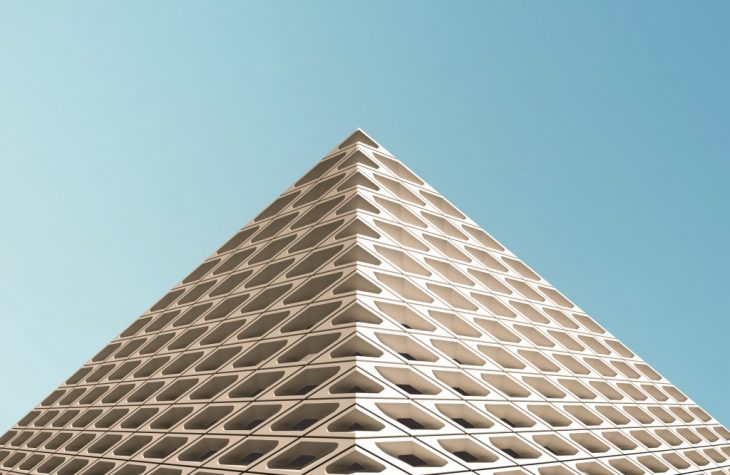
*My render of final result
STORY:
“With a strong and simple idea, strongly and simply realized, it even matches the indomitable Disney in presence.”
Joseph Giovannini, Architect Magazine.
The Broad Museum is a new contemporary art museum, designed by diller & Scofidio and constructed in 2015, close to the famous Walt Disney Consert Hall.
The main part of the building, named as “vault” is enveloped by the “veil,” a porous, honeycomb-like exterior structure that spans across the block-long third-floor gallery and provides filtered natural daylight.
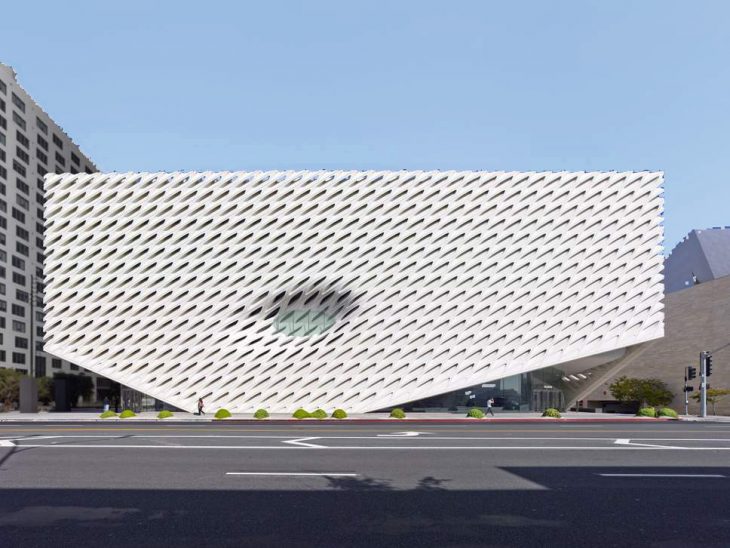
*Photo by Benny Chan
Essencially being a box, a building by “DS+S” becomes something much more, after few deft moves. lifted corners, indented wormhole and a facade, constructed of gridded panels, that stretch and deform according to light and position, turn this building into a spectacular sight.
The facade of Broad museum serves like a semi-transparent membrane, bridging the interior and exterior space by matters of light and visual connection.
The facade is constructed using a variety of materials: concrete, steel, glass fibre reinforced concrete (GFRC) and glass fibre reinforced gypsum (GFRG). The “veil” is assembled from almost 2,500 GFRC panels, supported by structural steel network.
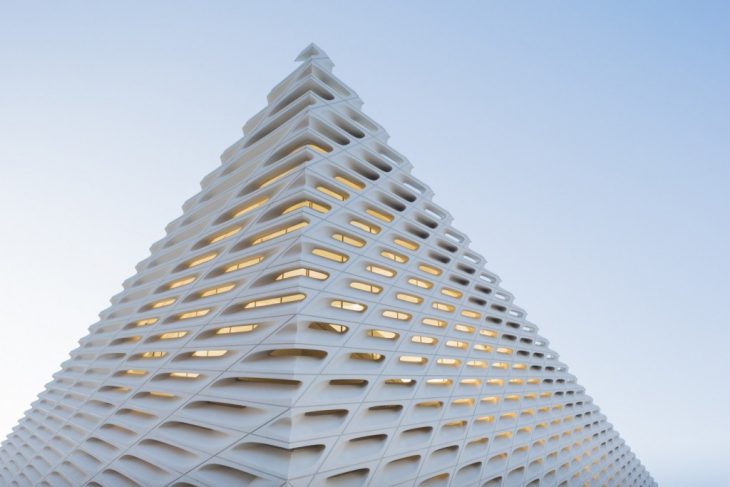
*Photo by Iwan Baan
The ambitious project of broad facade was very complicated to fabricate, thus leading to delays in construction of this building.
The “wormhole” serves as a source of light for an auditorium and a visual dominant of the front elevation.
PSEUDOCODE:
Dividing surface into panels
1. Create a surface from border line.
2. Divide it into parallelogramm, using tools from lunchbox plug-in.
3. Add sliders to parametrize the facade.
4. Get centroids of parallelogramm cells.
5. Use scale and fillet tools to get border curves for openings.
Creating solid panels
6. Create an attractor point for openings and extrusions. (to make all panels changeable by one point)
7. Extrude panels and move openings border curves towards the attractor point.
8. Loft border curves to create openings in panels.
9. Cap lofts and extruded panels.
10. Substract lofts from extrusions to create openings.
11. Join breps – unite the panels into one object.
Cutting the excessions and getting needed shape of “walls”.
12. Create breps on corners.
13. Substract breps from panels to cut unnecessary elements.
14. Mirror the resulting wall to get precise joints of panels.
15. Mirror two resulting walls to create a “box”.
16. Join breps – create a single object of 4 walls.
Creating a “Wormhoole”.
17. Set a point to control the position of opening.
18. Create ellipse.
19. Connect sliders for control over hole size.
20. Size and move ellipse.
21. Create a loft from resulting ellipses (using merge command to preserve order).
22. Cap loft.
23. Substract loft from the “Veil”, created from 4 joined walls.
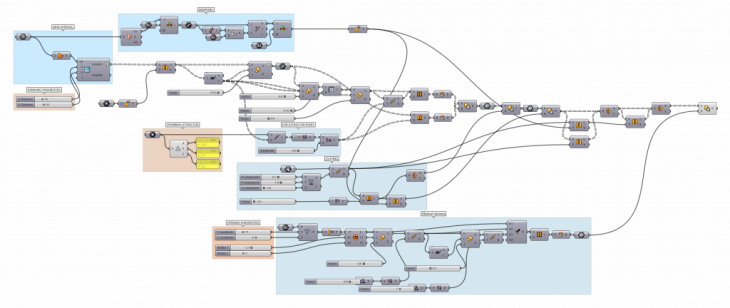
*Definition in Grasshopper
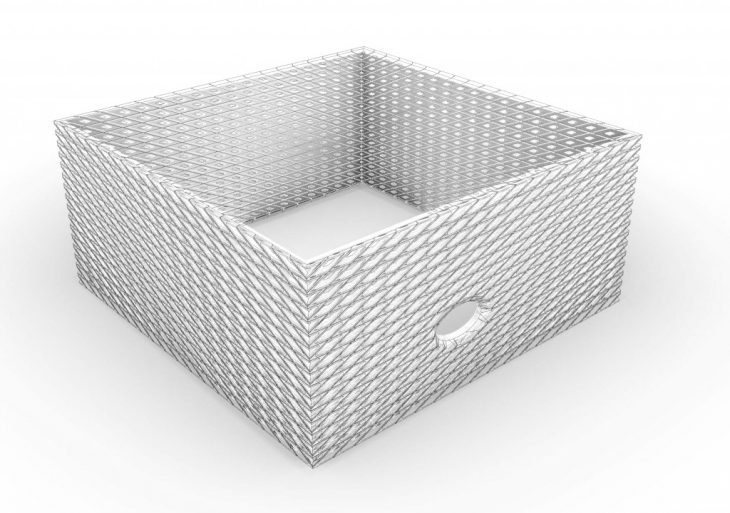
*Final result of the definition
DIFFERENT ITERATIONS:
Changing the number of panels, position of attractor point and opening in the facade, it is possible to get significantly varying facades of different scale, but with same principle.
Iteration 1
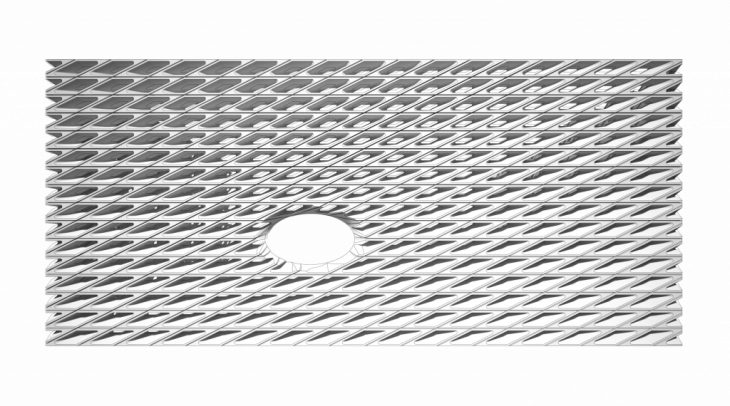
Iteration 2
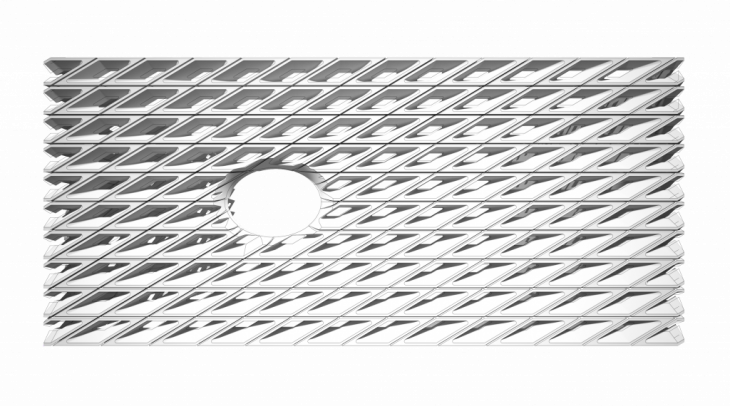
Iteration 3
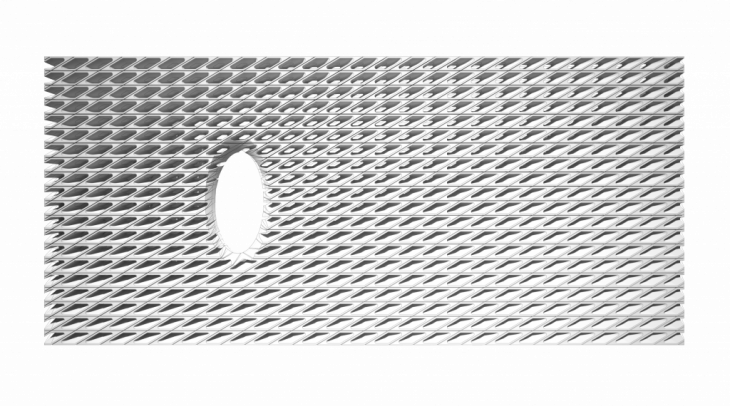
REFERENCES
https://www.archdaily.com/772778/the-broad-diller-scofidio-plus-renfro
TUTORIALS
https://www.youtube.com/channel/UCnRRBxzwAF4WY8bJEgwMhBA
RENDER
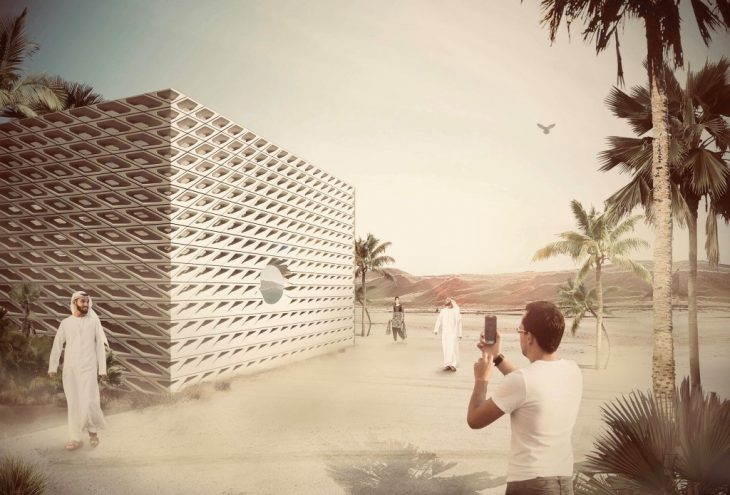
*My render of final result
Parametric Facade of Broad Museum is a project of IaaC, Institute for Advanced Architecture of Catalonia developed at the Master in Advanced Architecture in 2018 by:
Student: Ivan Marchuk
Faculty: Rodrigo Aguirre, David Andres Leon
Assistant: Daniil Koshelyuk